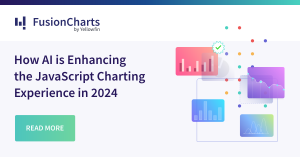Americans can see where their money goes using FusionCharts – quite literally. Vivek Kundra, the US national CIO unveiled the new Federal IT dashboard at https://it.usaspending.gov on Tuesday. The dashboards are designed to help Vivek and the CIOs of individual government agencies get a handle on the effectiveness of government IT spending. They also intend to give the public a look at thousands of IT projects underway around the federal government.
And now for our moment of pride – FusionCharts Suite has been used extensively in the dashboard for data visualization purposes (Thanks to Tim O’Reilly for pointing it out).
This is what the dashboard looks like first up:


- Correct usage of charts: While using a simple column chart to show agency-wise investment, an angular gauge to show rating on a scale of 10 and the like are no Eureka moments – but with the wide variety of charts available at a user’s disposal nowadays, people do tend to use a maximum number of chart types just for the heck of it. So the choice of chart types has to be commended here. The only choice which will forever remain debatable is the use of the pie chart, which has been used for displaying the overall ranking.
- Drill-down capabilities: You can drill-down right from the agency name to the individual projects under the agency and more details like evaluation and spending on them. This allows the user to see details at the level he wishes to. So while Vivek and the CIOs of individual government agencies might be looking more at the overall picture, members of the public would be more interested in individual projects which directly affect them.
- Effective use of tooltips: Let’s accept it. Not many people would be interested in all the agencies shown in the chart all at once. So extra information regarding agencies and their investments & spending are neatly delegated to the tooltips. When someone wants more information about a particular agency, he can hover over it for more info and then drill-down into it for even greater details.
- Meaningful captions: All the charts in the dashboard have meaningful captions which do a good job of summarizing what the chart comprises of as a whole. For example, the first screen of the dashboard clearly talks about the number of investments for a particular agency and the total spending on all of them, which fits the data better in context.



Tod
July 4, 2009, 6:37 amHi,
Thats a gr8 news, thanks for your charts..
Adrian
September 1, 2021, 10:01 pmNice read, I just passed this onto a colleague
who was doing a little research on that. And he actually bought me lunch since I found it for him smile So let me rephrase that: Thanks for lunch!